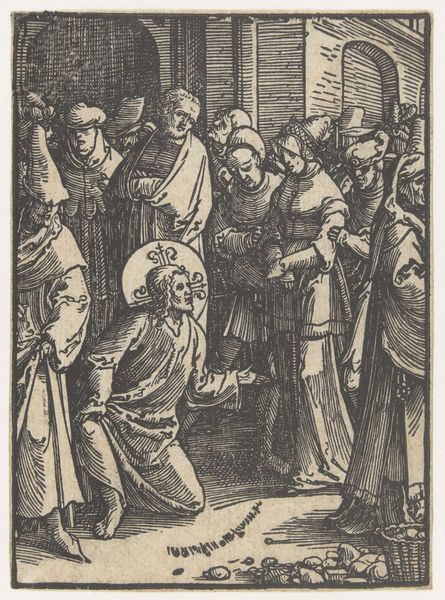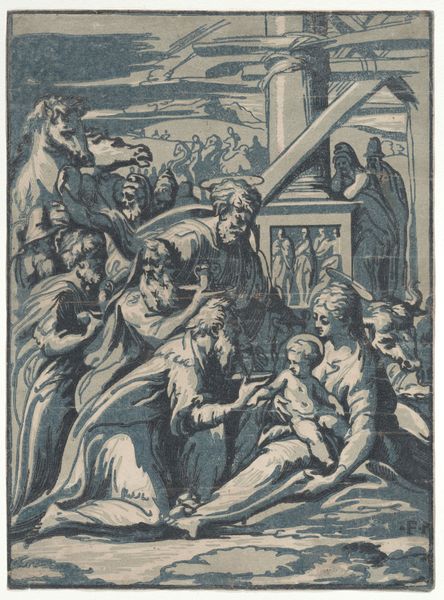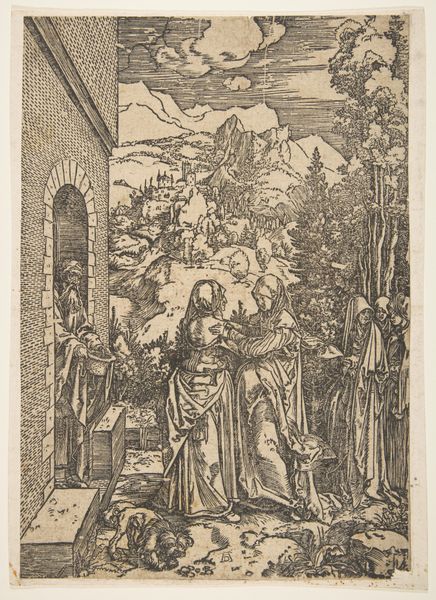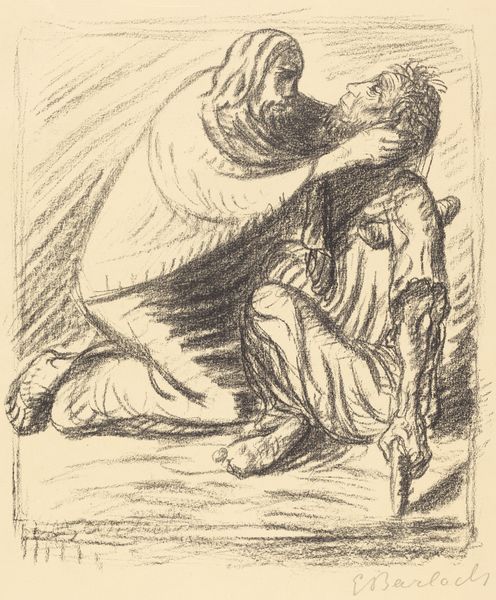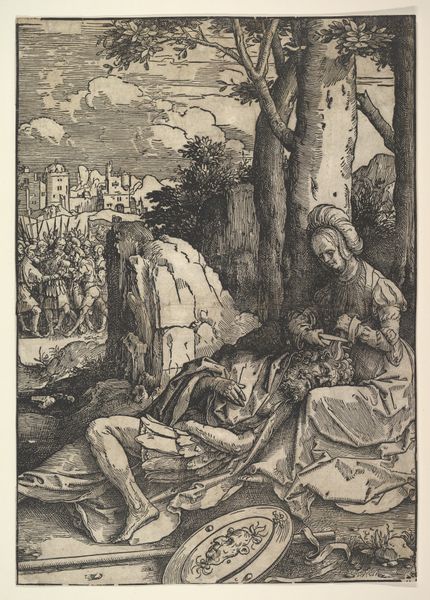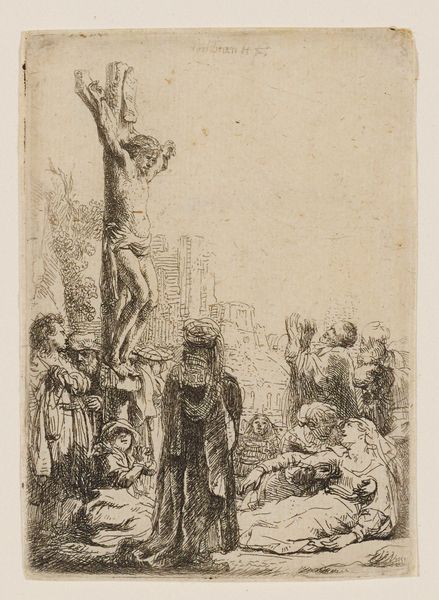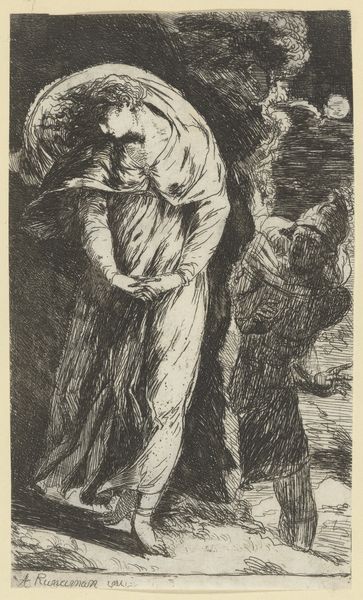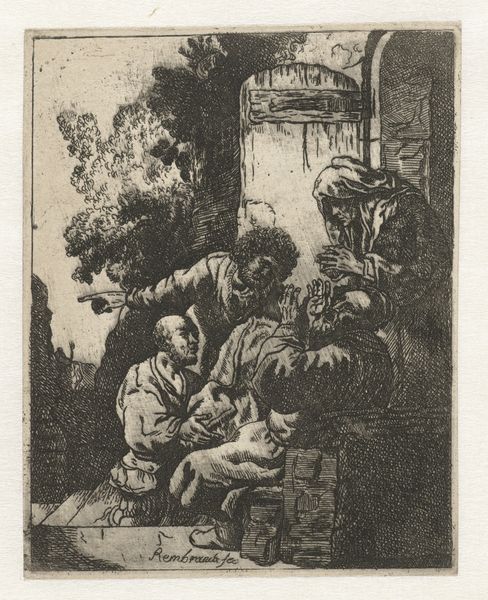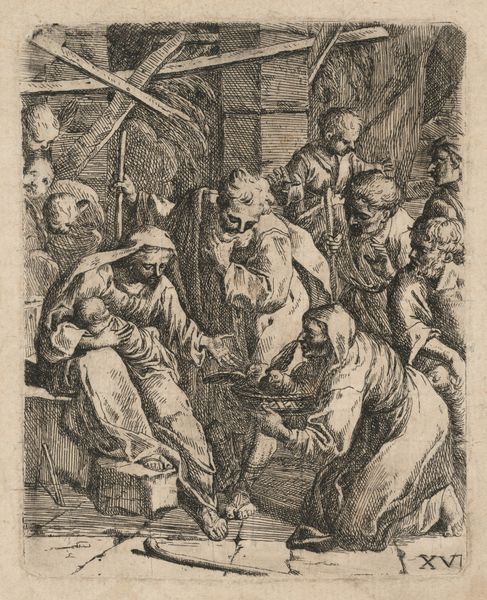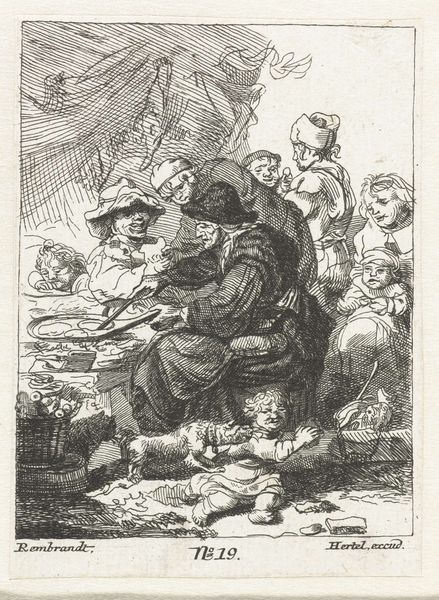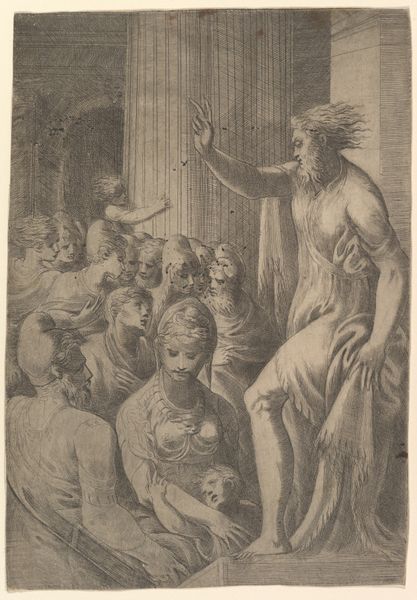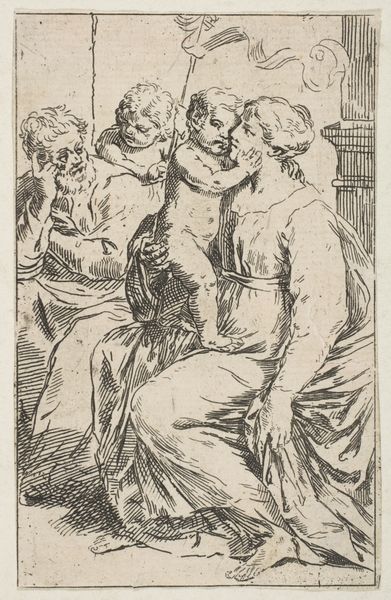
The Miraculous Mass of Saint Martin of Tours with the Apparition of a Ball of Fire above His Head 1582 - 1647
0:00
0:00
drawing, print, ink, engraving
#
drawing
#
narrative-art
#
baroque
# print
#
figuration
#
ink
#
history-painting
#
engraving
Dimensions: 7 3/16 x 4 1/8in. (18.2 x 10.5cm)
Copyright: Public Domain
Curator: At first glance, the energy here feels almost feverish. A mass of people surges towards the foreground, rendered with such frenetic lines and shading. Editor: Yes, there's a palpable urgency. We are viewing Giovanni Lanfranco's "The Miraculous Mass of Saint Martin of Tours with the Apparition of a Ball of Fire above His Head." This drawing, likely done sometime between 1582 and 1647, uses ink engraving to capture a moment heavy with religious and social significance. Curator: That ball of fire above Saint Martin—a familiar symbol for divine presence— really draws my eye. It’s not just light; it’s a sign, a marker of spiritual authority. And the saint seems to barely notice it, consumed by his duty, but everyone else in the picture notices and reacts to it. Editor: Precisely. Consider how this image would have been disseminated. As a print, it circulated widely, reinforcing not only the narrative of Saint Martin but also the power structures of the Church. The figures here reflect a hierarchy. Those closest to Martin appear well-fed and elaborately dressed; as we move left, there are faces etched with hardship, even poverty. What message does that visual encoding transmit? Curator: Well, miracle narratives were a central element in Catholicism and hagiography to portray holy persons in antiquity as wonder-workers with close ties to God. To understand the miracle and that holy association, this image presents us with several possible readings related to class and the perception of the "common folk." But looking beyond the literal portrayal of wealth or faith, perhaps we can also interpret Lanfranco's figures psychologically—their wonder, hope, resignation, maybe even doubt. Editor: Perhaps... but to not explicitly acknowledge power structures here is irresponsible. This is happening within the Counter-Reformation—miracles affirmed doctrine and legitimized Catholic authority amidst growing Protestant challenges. A symbol like the fireball affirmed Saint Martin’s special status. I also wonder about the seemingly mundane setting for such a supernatural event. Curator: I concede, context is everything. As an iconographer, I read that the mundane setting suggests miracles are possible anywhere, even among everyday rituals. But you're right; focusing solely on iconography overlooks this print's broader socio-political weight. Editor: Ultimately, viewing this piece demands we question both what's shown and, crucially, what’s deliberately emphasized. Curator: Indeed; whether spiritual ecstasy, societal power play, or a skillful rendering of dramatic tension—there is much to think about in such a tiny frame.
Comments
No comments
Be the first to comment and join the conversation on the ultimate creative platform.

